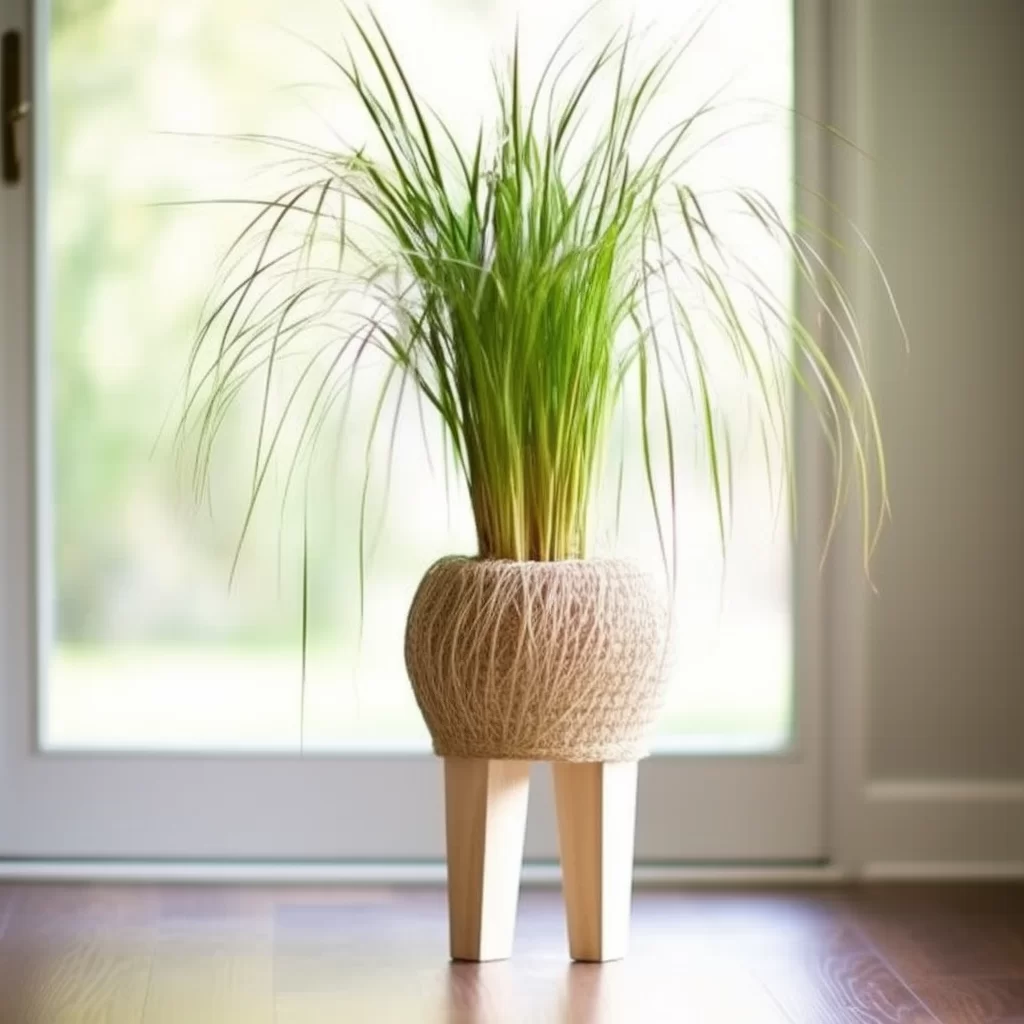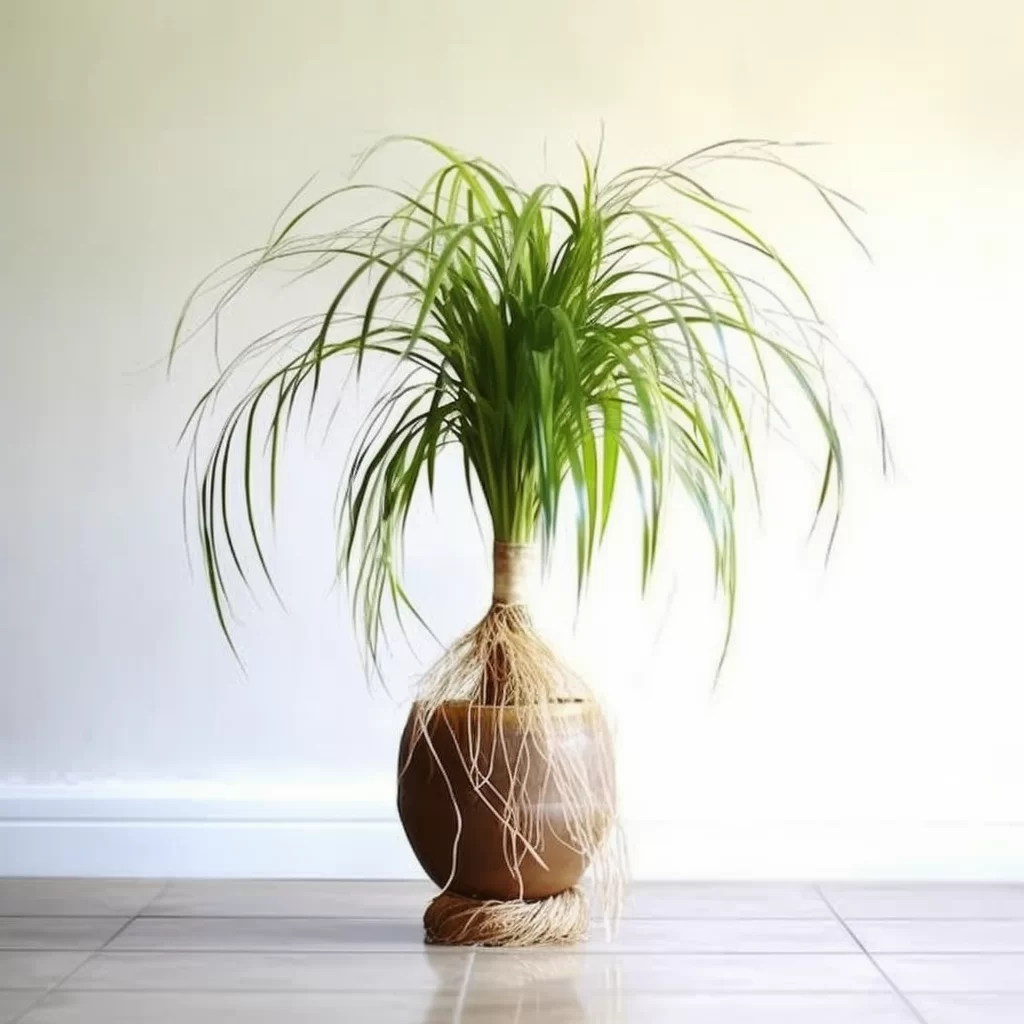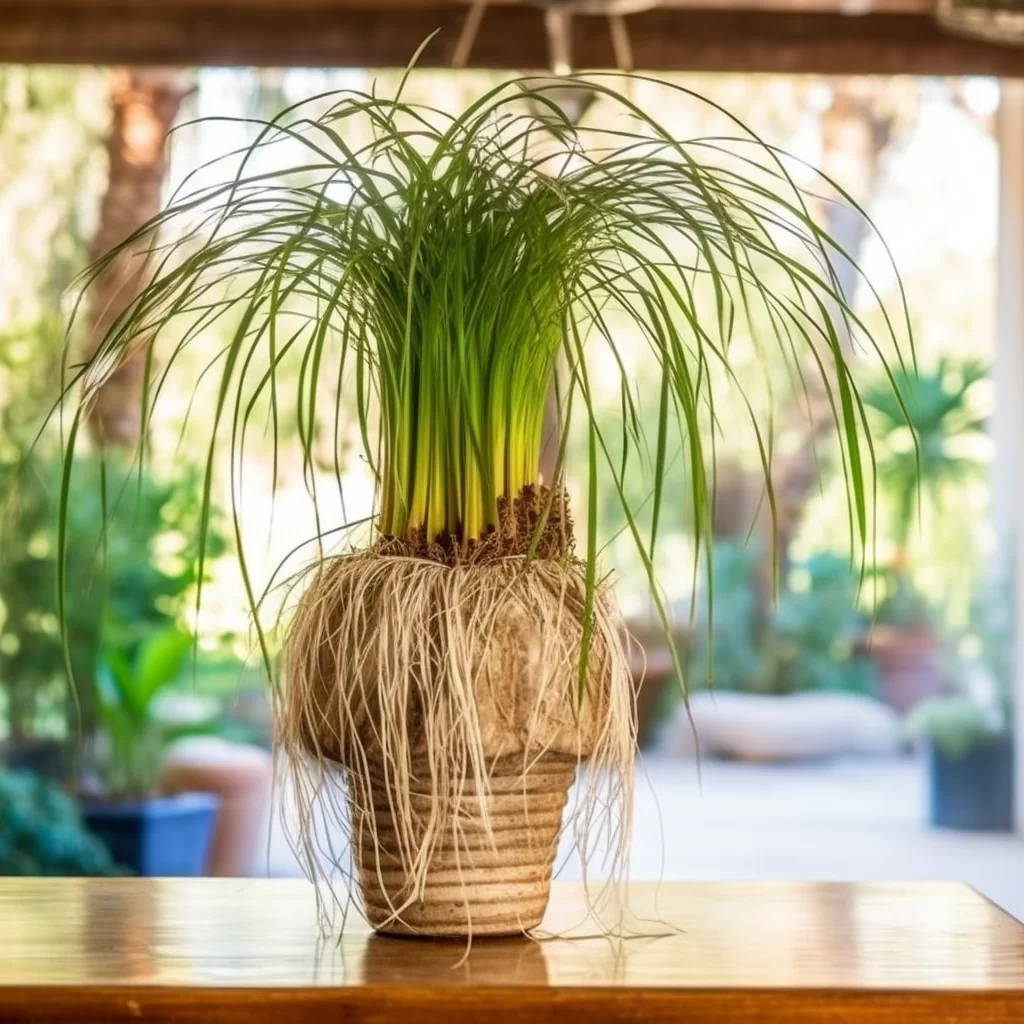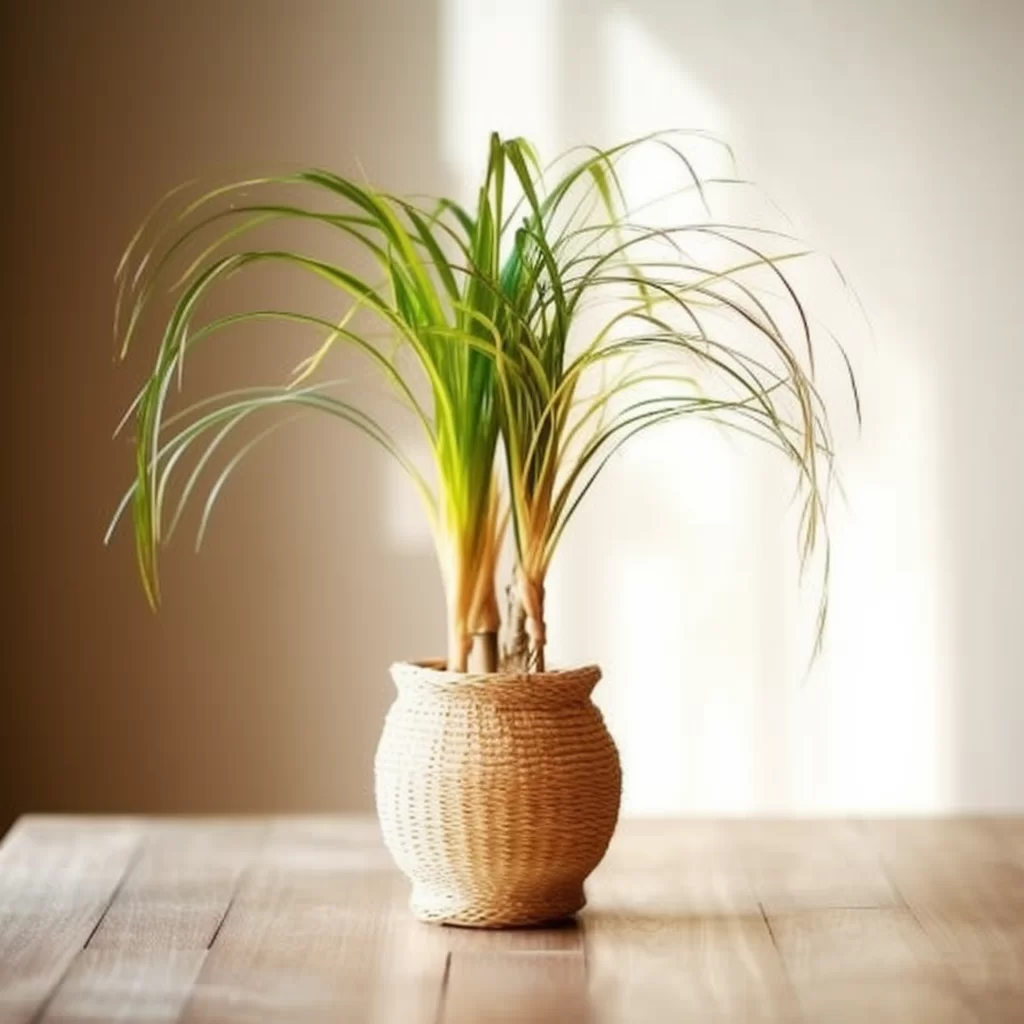Story of Day :
The Ponytail Palm Plant: A Complete Guide and Care Tips
The ponytail palm plant is a fantastic option for anyone who wants a distinctive and easy-to-care-for houseplant.
Although often mistaken for a true palm, it’s actually part of the Agave family and comes from Mexico.
This charming plant is low-maintenance, making it an excellent choice for those who struggle to keep plants alive.One of the best things about the ponytail palm is that it doesn’t require much attention.
It’s drought-tolerant, so you don’t need to water it often, and it can handle low light levels.
Additionally, this plant won’t grow too large or bushy, meaning you won’t need to prune it regularly like other indoor trees.
So if you’re in search of a unique yet undemanding houseplant that will brighten up your space without requiring too much work on your part, consider adding a ponytail palm plant to your collection!
Appearance
The ponytail palm plant is a unique specimen that has caught the attention of plant enthusiasts all over the world.
Its long, slender leaves are reminiscent of an elephant’s foot or a pony’s tail, hence the name.
The leaves can grow up to three feet in length and are usually green or gray-green in color.
The best part about this plant is that it can survive in arid or dry environments thanks to its trunk which stores water like a camel hump.
It is an easy-to-maintain indoor plant that requires little attention from its owner. If you’re looking for a low-maintenance houseplant, then the ponytail palm should definitely be on your list.
If you’re looking for a low-maintenance houseplant, then the ponytail palm should definitely be on your list.
Not only does it have an interesting appearance with long leaves and a thick trunk but it also has some fantastic survival mechanisms like storing water in times of droughts and other unfavorable conditions.
It would make an excellent addition to any home as its easy care requirements make it perfect for beginners while still being beautiful enough to attract experienced gardeners alike!
Lighting Requirements
Ponytail palm plants are stunning indoor plants that can thrive in a variety of lighting conditions.
They generally prefer bright indirect light, which means they should be placed near a window but not directly in the path of sunlight.
This allows them to receive plenty of natural light without having their leaves scorched by the sun’s rays.
However, if you don’t have a space with bright indirect light available, ponytail palms can also tolerate partial shade.
This makes them versatile indoor houseplants that can adapt to different lighting environments as needed.If you do choose to place your ponytail palm plant near a window with direct sunlight, it’s important to take precautions to protect its leaves from becoming scorched.
Direct sunlight is too strong for these plants and will damage their foliage over time.
The best way to filter the light is by using sheer curtains or blinds on your windows.
These allow some natural light through while blocking out the most intense rays that could cause damage.
With proper care and attention, your ponytail palm plant will continue to thrive and add some greenery and beauty indoors all year round!

- If you notice their leaves turning yellow or brown at the tips, it may indicate too much direct sunlight.
- You’ll also need to rotate your ponytail palm every few months so every side gets equal exposure to sunlight.
One of the most important aspects of plant care is providing them with adequate water and humidity.
While different plants have varying requirements, there are some general guidelines to follow.
It’s crucial to ensure that your plants are not over-watered or under-watered, as both can be detrimental to their health.
Over-watering can lead to root rot, while under-watering can cause wilting and stunted growth.Humidity is also a critical factor in plant health.
Some plants thrive in high humidity environments, while others prefer drier conditions.
To increase humidity around your plants, you can use a humidifier or place a tray filled with water near them.
It’s important to monitor the moisture levels regularly and adjust accordingly based on each plant’s individual needs.
Providing the right amount of water and maintaining appropriate humidity levels will go a long way in keeping your plants healthy and happy!
Ponytail palms are a unique type of plant that can be easily identified by their long, thin trunks and tufts of green leaves at the top.
One interesting feature of these plants is that they store water within their trunks, making them an excellent choice for those who don’t have a lot of time to devote to watering.
Unlike other houseplants, ponytail palms don’t require frequent watering and can even suffer from overwatering.
This is because standing water around the roots can lead to root rot which could ultimately harm the plant.
Therefore, it’s important to make sure your soil is well-drained before watering again once dry – usually about every two weeks. If you’re looking for a low-maintenance yet aesthetically pleasing houseplant, then consider adding a ponytail palm to your collection! Not only will this succulent add some visual interest with its unique structure and lush green leaves, but it also requires minimal care in terms of watering.
If you’re looking for a low-maintenance yet aesthetically pleasing houseplant, then consider adding a ponytail palm to your collection! Not only will this succulent add some visual interest with its unique structure and lush green leaves, but it also requires minimal care in terms of watering.
As mentioned before, these plants are able to store water within their trunk so they don’t need frequent watering like other types of indoor plants do.
However, it’s important not to overdo it with watering as this can lead to harmful root rot if there’s standing water around the roots.
In order to keep your ponytail palm healthy and thriving all you need is some well-draining soil and occasional attention – about once every two weeks should suffice!
- Avoid getting any water on its foliage while watering, as this can cause leaf rot.
- You can also increase the humidity around your ponytail palm by misting it periodically or setting a tray of water near it.
Soil and fertilizer requirements are essential factors to consider when growing plants, flowers, or vegetables.
The right soil type can significantly affect the root development and overall health of your plants.
For example, some plants prefer well-drained soils that allow air to circulate around their roots, while others require moist soils that retain water for more extended periods.
To determine the best soil type for your plants, it’s crucial to conduct a soil test using a kit available at any garden store or nursery. Once you have determined the appropriate soil type for your plant’s growth needs, you need to select an effective fertilizer.
Once you have determined the appropriate soil type for your plant’s growth needs, you need to select an effective fertilizer.
Fertilizers provide essential nutrients such as nitrogen, phosphorus, and potassium required by plants for optimal growth.
However,fertilizer selection is not always one-size-fits-all; different types of fertilizers work better with different types of soils and crops.
Organic fertilizers from composted materials can enrich the soil with vital micro-nutrients over time compared to synthetic fertilizers that may cause long-term harm to your garden’s natural ecosystem if not used correctly.Therefore,it’s important always to follow manufacturer guidelines on dosage amounts so as not overfeed or underfeed your plants which can lead them susceptible diseases or poor yields respectively .
Ponytail palms are an easy-to-care-for houseplant that thrives in soil that has good drainage.
You can opt for cactus potting soil, which works well to keep the moisture levels just right without risking root rot.
As for fertilizing, you don’t need to worry about it too much as these plants do not require a lot of nutrients to grow and maintain their stunning look.
However, if you want to give your plant an extra boost during the growing season (spring and summer), using a balanced fertilizer once a month should do the trick.Overall, owning and caring for a ponytail palm is an excellent choice if you’re looking for a low-maintenance yet fabulous-looking plant.
With just minimal care such as providing good soil with proper drainage and occasional fertilizing during its active growth period, your ponytail palm will reward you with its unique appearance and air-purifying benefits for years to come!
- If planted outdoors ensure the type of soil and location is suitable for its growth especially in dry climates where there little rain like desert areas..
- Avoid over-fertilizing as this may lead to salt buildup which is harmful to their roots.
Ponytail palms, also known as elephant foot trees, are fascinating plants that can easily be propagated.
These plants are native to Mexico and thrive in warm climates with plenty of sunlight.
Propagating these unique trees is relatively simple and can be done using a variety of methods.
One way is by cutting the stem or base of the plant and allowing it to dry out for a few days before planting it in well-draining soil.
Another method involves separating the offshoots or pups from the parent plant and potting them individually once they have developed roots.Propagation of ponytail palms can also be done through seed germination, although this method requires patience as it can take several years for seeds to mature into mature plants.
When propagating through seed germination, it is recommended to soak them overnight before planting them in moist soil with good drainage.
Ponytail palms are hardy and drought-tolerant plants that require little maintenance once established, making them an ideal addition to any indoor or outdoor garden space.
Ponytail palm plants are typically propagated through seeds, but their slow growth rate can make it difficult to produce flowers when grown indoors.
Luckily, mature plants sometimes produce offsets known as “pups” which grow at the base of the plant.
These “pups” can be separated from the mother plant once they reach a size of approximately three inches and transplanted to their own pots with well-draining soil.When propagating ponytail palm plants, it’s important to note that seeds are not always the most practical option due to their slow growth rate.
While waiting for seeds to grow into mature plants, those interested in expanding their collection might consider looking for “pups” instead.
These miniature versions of the plant can be found at the base of mature ponytail palms and can be easily transported to new pots once they’ve grown large enough.
This method not only saves time but also ensures a higher success rate for propagation enthusiasts who want more variety in their indoor garden without waiting years on end for a single plant to flower!
To sum up, the preceding information can be distilled into a few key points.
Firstly, we have learned about the importance of maintaining a healthy lifestyle and engaging in regular physical activity.
This not only helps to improve our overall wellbeing but can also reduce the risk of developing various health conditions such as heart disease and diabetes.Secondly, we have explored how technology has revolutionized many aspects of daily life, from healthcare to entertainment.
However, it is important to use these tools responsibly and not become overly reliant on them.
By harnessing the benefits of technology while still prioritizing human connection and interaction, we can lead fulfilling and balanced lives in an ever-changing world.
The ponytail palm plant is a popular choice for those who want an attractive and low-maintenance houseplant.
It features long, slender leaves that flow out from a swollen base that resembles a bulb or ponytail.
This plant can add character to any room with its unique shape and texture.
With the simple care tips provided, you can easily keep your ponytail palm healthy and thriving for years to come without putting in too much effort.One of the best things about the ponytail palm is that it is very forgiving when it comes to watering requirements.
They do not require frequent watering, making them ideal for those who are forgetful or have busy schedules.
Additionally, this plant thrives in bright light but can tolerate lower levels of light as well.
By following these simple care instructions, you can enjoy the beauty of this unique plant in your home with minimal effort required on your part!